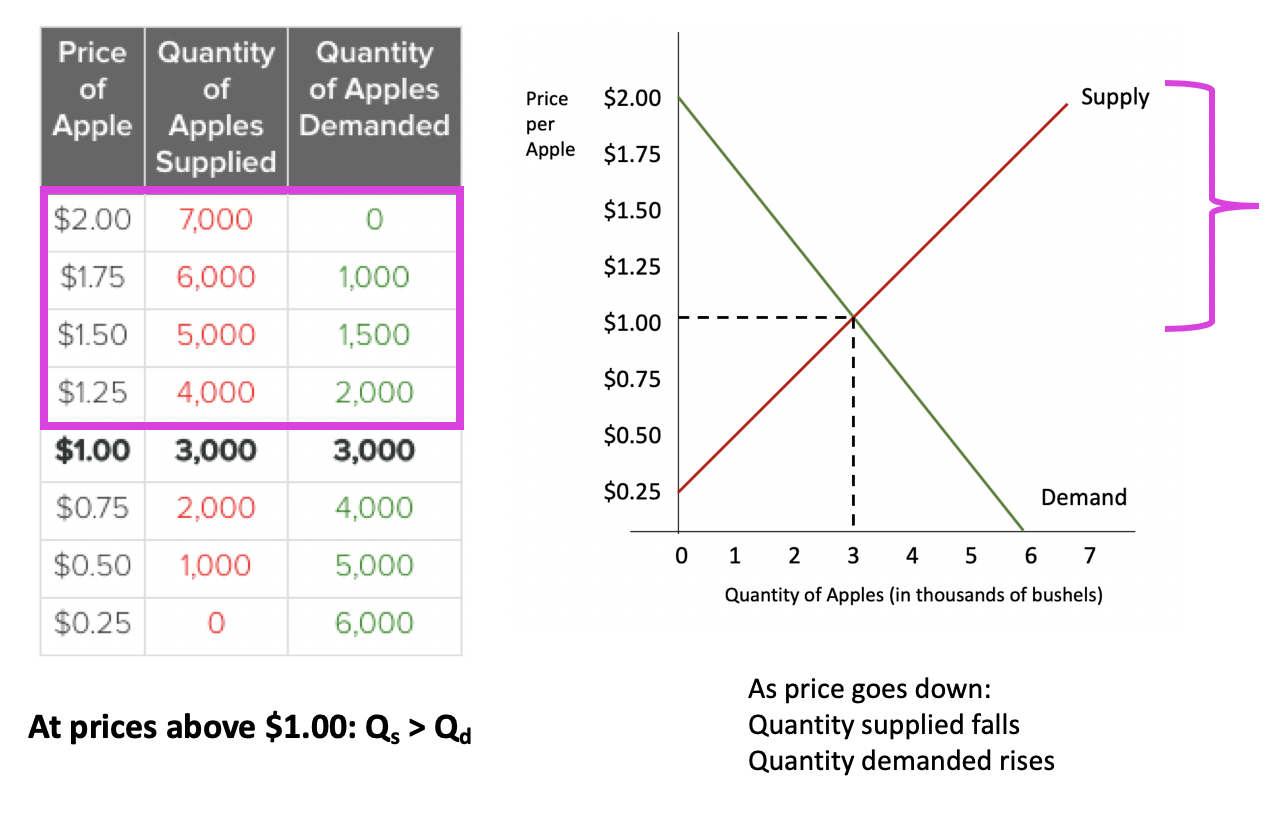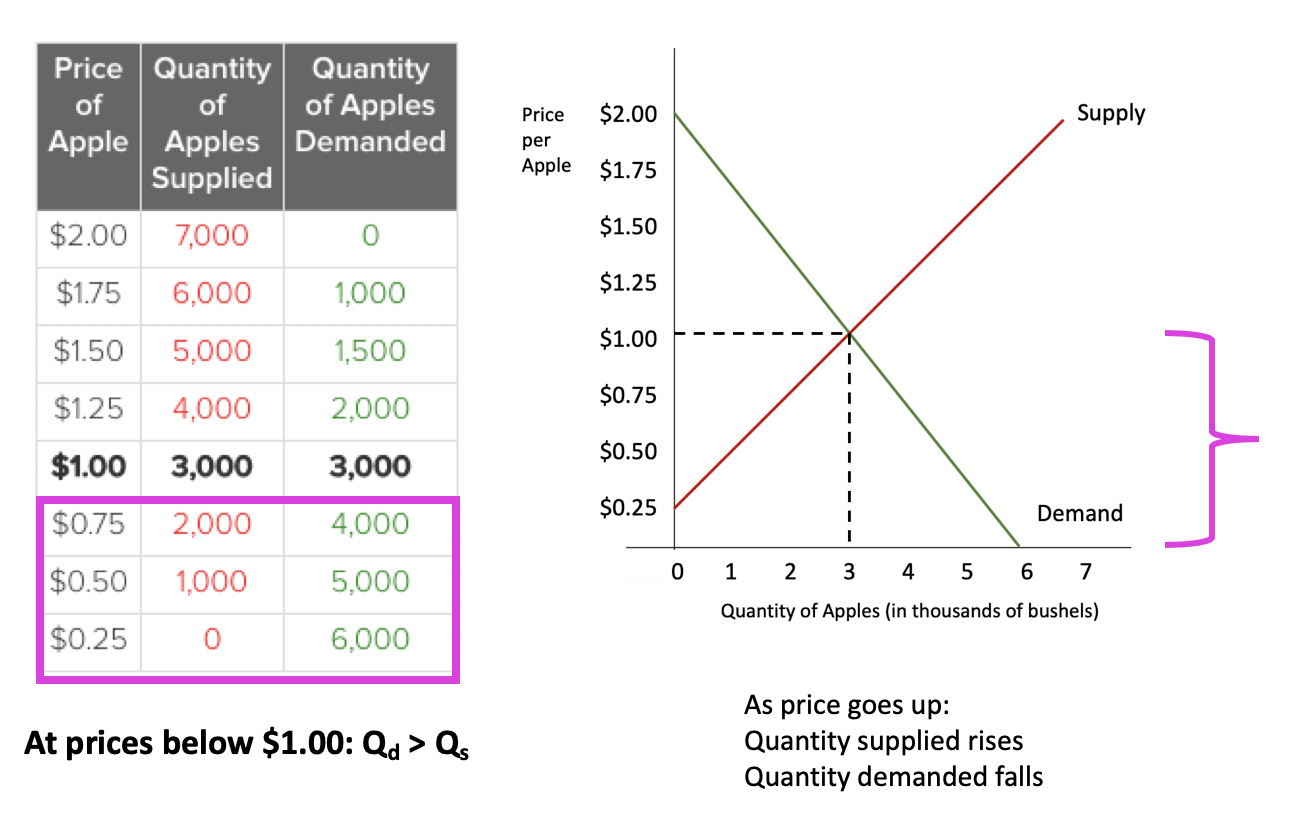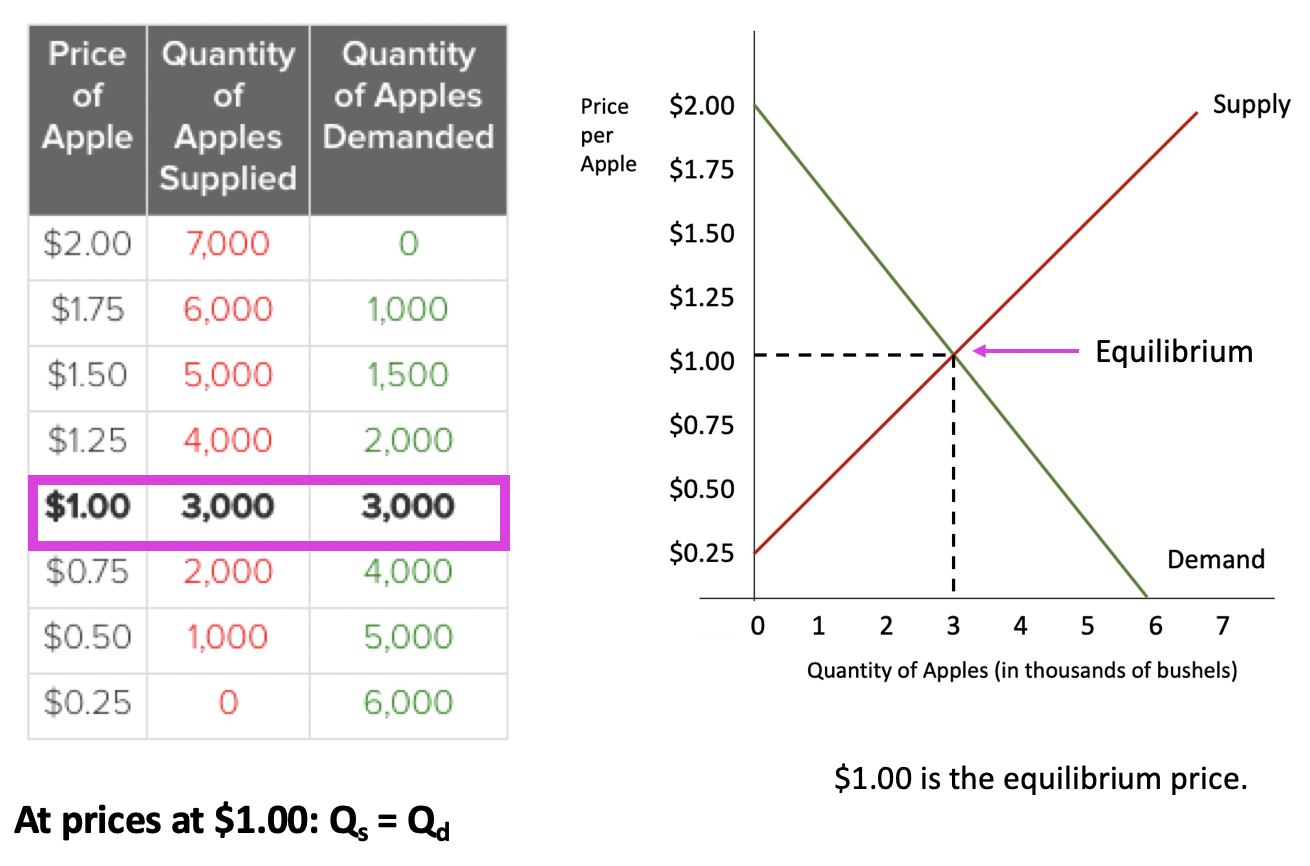The law of demand is the inverse correlation between price and quantity with all other variables fixed.
For example, here is a demand schedule for Granny Smith apples, outlining how many apples a consumer would purchase per week at various prices. At high prices, consumers do not want to purchase as many, while as the price falls, they want to purchase more.
| Price of Granny Smith Apples | Quantity of Granny Smith Apples Each Week |
|---|---|
| $2.00 | 0 |
| $1.75 | 1 |
| $1.50 | 2 |
| $1.25 | 3 |
| $1.00 | 4 |
| $0.75 | 5 |
| $0.50 | 6 |
| $0.25 | 7 |
| $0.00 | 8 |
When we plot the points on a graph, we can see the inverse relationship between price and quantity, illustrated by a downward sloping demand curve.

As the price of apples goes down, we buy more. As the price of apples goes up, we move along the curve to buy fewer apples.
Therefore, there is a negative relationship between price and quantity with demand.
We refer to this as a movement along the curve as the price changes. As mentioned, as the price of Granny Smith apples drops, we buy more. This is only involving a relationship between the two axes that comprise the graph--the price of Granny Smith apples and the quantity that is being purchased.
Therefore, we do not need a new demand curve. We simply move from one point to the next to show as the price goes up or down, which is why it is called movement along the demand curve.
The law of supply states that if the price of a good decreases, the quantity supplied decreases. The opposite would also be the case, meaning as the prices go up, the quantity supplied would also increase.
Again, using the same prices of apples, now you can see a different relationship between price and quantity.
| Price of Granny Smith Apples | Quantity of Granny Smith Apples Each Week |
|---|---|
| $2.00 | 7 |
| $1.75 | 6 |
| $1.50 | 5 |
| $1.25 | 4 |
| $1.00 | 3 |
| $0.75 | 2 |
| $0.50 | 1 |
| $0.25 | 0 |
As the price goes down, the quantity these farmers are willing to produce falls, because, at very low prices, the farmer likely cannot even cover his costs. As the price goes up, he has more of an incentive, ability, and willingness to supply, so the quantity supplied rises.
This represents a positive relationship between price and quantity for supply.

Again, a change in price will cause movements along the supply curve. As the price of Granny Smith apples increases, farmers want to supply more. This is only involving a relationship between price and quantity, so we do not need a new curve. We simply move along the curve to see the new price and quantity combination.
At prices above $1.00: Qs > Qd
Now, if we are looking at these movements along the curve, you can see that at prices above $1 where these two curves converge, the quantity supplied exceeds the quantity demanded.

When that occurs, there is an incentive or a gap between the supply and demand curves.
In this case, there will be an incentive for grocers to lower the price. You may recall that as we lower the price, we simply move along the curve. We do not need a new curve.
So, as we lower price, the quantity supplied would fall, the quantity demanded would rise, and they would meet in the middle.
If the price was too low, then there is a gap, but it is now where the quantity demanded exceeds the quantity supplied, meaning there are a lot of people buying but not a lot of people producing.
At prices below $1.00: Qd > Qs
At prices below $1 where these two curves converge, the quantity demanded exceeds the quantity supplied.

As grocers raise the price, we see the quantity demanded fall, and at the same time, we see the quantity supplied rise--according to the laws of supply and demand--until we meet in the middle at equilibrium.
At the price of $1.00: Qs = Qd
The equilibrium price is the only price where there is no tendency for change, and it is the only price that clears the market, where the quantity supplied equals exactly the quantity demanded.

Therefore, equilibrium is defined as the price and quantity pair at which supply and demand intersect or the price and quantity at which the market clears.
Source: Adapted from Sophia instructor Kate Eskra.